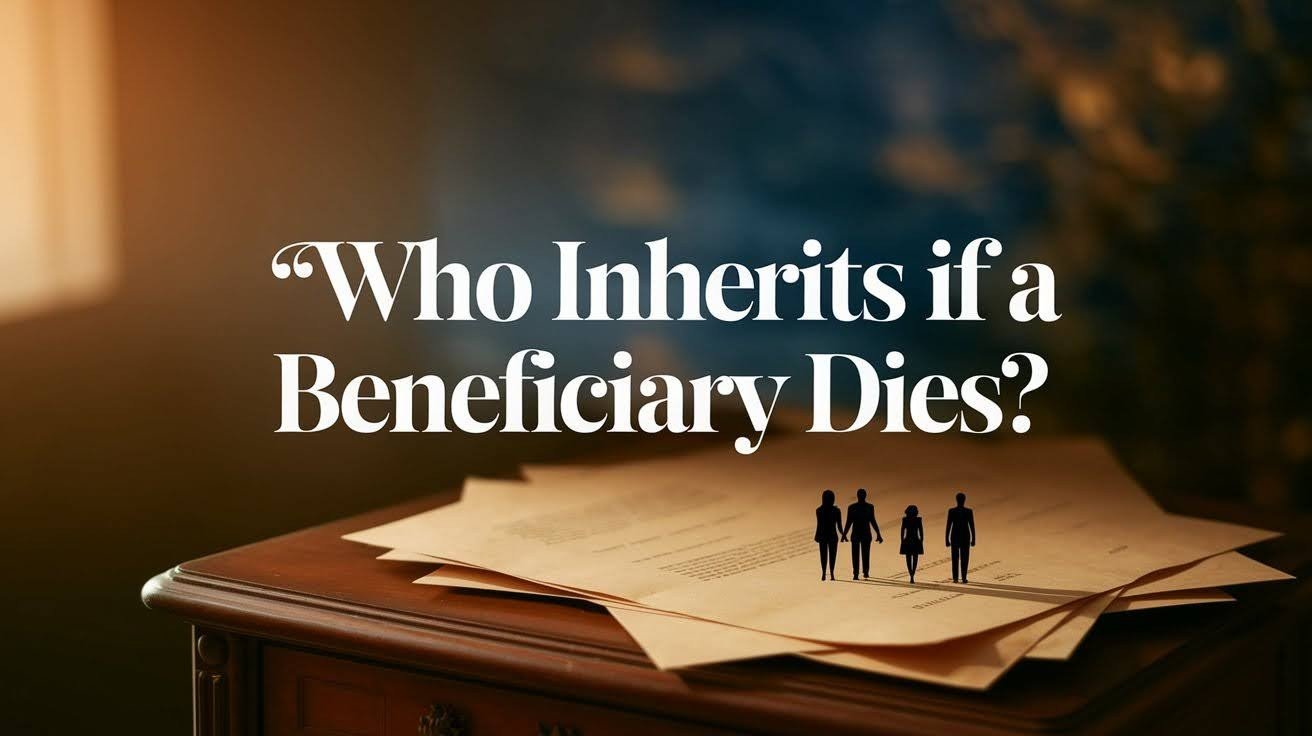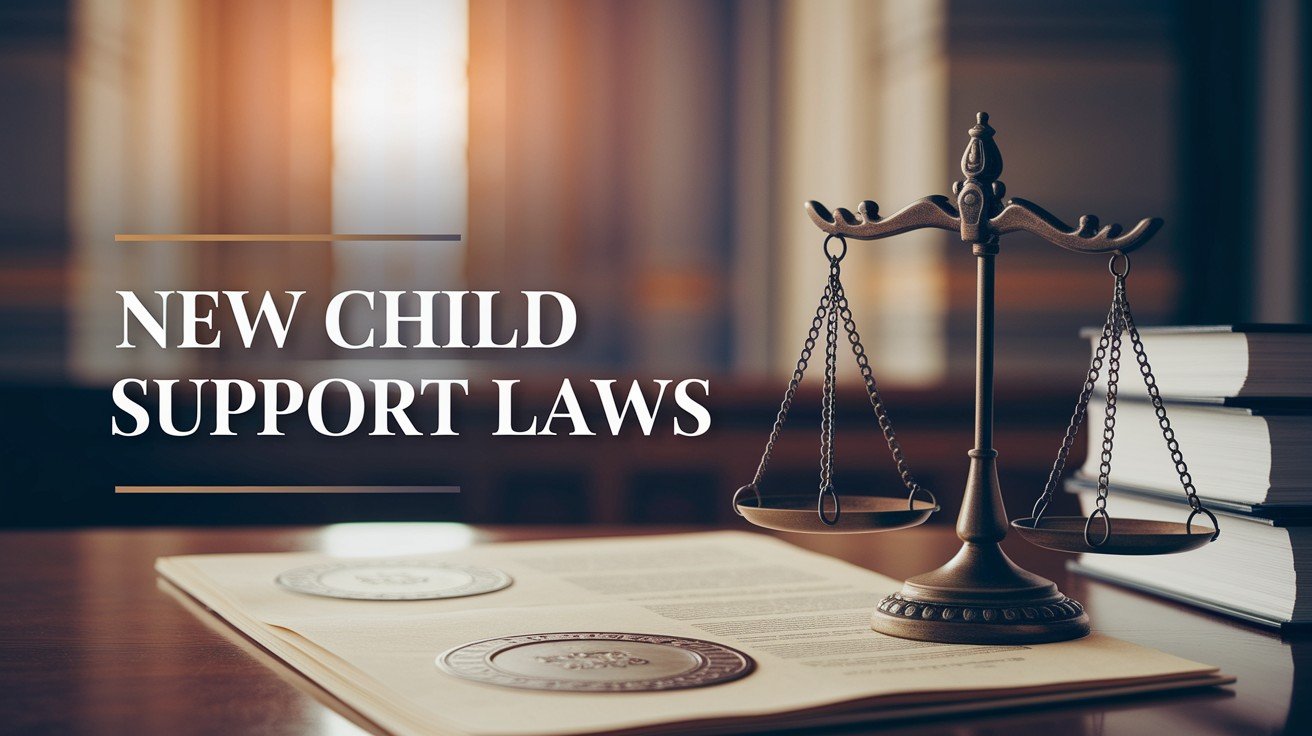Have you ever wondered what happens if someone you care about, and named in your will, passes away before you do? Or what if they die before you, but before receiving their inheritance? These situations are more common than many realize.
Understanding who inherits if a beneficiary dies isn’t just about legal rules it’s all about protecting the people and yourself, too. And you love ensuring your wishes are honoured and respected.
This method is here to help you and your loved ones navigate negative and bad situations and hard times, and find different scenarios and ways, and show practical examples you’ll see in the world.
Who Inherits If a Beneficiary Dies?
When a beneficiary dies, their share usually disappears from the will unless specific backup plans exist. This is called “lapse,” and it means the gift is simply removed.
The deceased beneficiary’s portion typically goes back into the main estate. From there, it gets divided according to state laws that decide who inherits when someone dies without a will.
However, some states have anti-lapse laws that may give the share to the deceased beneficiary’s children or grandchildren instead. The exact outcome depends on your state’s rules and how your will is written.
Key Factors That Decide Distribution
Several legal and personal factors determine who ultimately inherits when a beneficiary passes away
| Factor | Explanation |
| Timing of Death | Whether the beneficiary dies before the will is made, or after your death but before inheritance, changes who gets the share. |
| Wording in Will/Trust | The exact language in your estate plan may include backup instructions or leave gaps. |
| State Inheritance Laws | If the will doesn’t cover it, state laws decide distribution, often protecting close family. |
Breaking Down Scenarios
Breaking down scenarios helps simplify complex situations by looking at different possible outcomes one step at a time.
If the Beneficiary Dies Before the Will-Maker
The best solution is to update your will right away. You can remove the deceased beneficiary and name someone new in their place.
If you don’t update your will, that person’s share typically disappears unless your state has special protection laws. These anti-lapse laws might give the inheritance to their children instead.
For example, Michigan’s anti-lapse law helps the deceased beneficiary’s descendants inherit if the original beneficiary was your child or grandchild. Not all states offer this protection.
If the Beneficiary Dies After the Will-Maker but Before Distribution
The executor must follow exactly what your will says. If your will doesn’t address this situation, state laws take over to decide who inherits if a beneficiary dies.
When only one beneficiary was named, their share goes back into your estate. Then it gets distributed according to intestacy laws, which typically favor spouses and children.
With multiple beneficiaries, the deceased person’s share usually gets divided among the surviving beneficiaries. However, this depends on whether your will uses “per stirpes” distribution or other specific language.
Legal Doctrines and Distribution Methods
Legal Doctrines and Distribution Methods refer to the rules and approaches courts or estate laws use to determine how assets are divided among heirs or beneficiaries:
Contingent Beneficiaries and Safeguards
Contingent beneficiaries act as your estate plan’s safety net. They are the people who inherit if your primary beneficiary cannot, whether due to passing away before you, disclaiming the inheritance, or being legally ineligible.
By naming contingent beneficiaries, you protect your wishes and give your plan flexibility. Life is unpredictable, marriages, divorces, or sudden losses can change the order of inheritance.
Safeguards like contingent beneficiaries also help you maintain fairness. Instead of assets automatically reverting to your estate or following strict state laws
Distribution Methods Explained
Per Stirpes means the deceased beneficiary’s share passes to their children or grandchildren. It keeps the inheritance within that family line.
Per Capita with Representation divides the inheritance equally among the closest generation of surviving heirs. This method spreads the wealth more evenly across the family.
Lapse simply removes the deceased beneficiary’s share completely. The remaining beneficiaries split what’s left, or it goes back to the estate.
Intestacy Rules as a Fallback
| Relationship | Typical Inheritance Order | What They Receive |
| Spouse | Priority | Usually 50-100% depending on the children |
| Children | Second priority | Equal shares or remainder after spouse |
| Parents | Third priority | Full estate if no spouse/children |
| Siblings | Fourth priority | Full estate if no closer relatives |
| Extended family | Final priority | Varies by state laws |
Importance of Keeping Your Will Updated
Life changes fast marriages, children, divorces, or even the loss of a loved one can dramatically affect your estate plan. If your will doesn’t reflect these changes, your assets may not end up where you truly wanted them to go.
By reviewing and updating your will regularly, you keep control over your legacy. It’s not just about money, it’s about making sure your family is cared for and avoiding conflicts among loved ones.
Think of your will as a living document. Just like you update your insurance or financial plans, refreshing your will every few years ensures that your wishes remain crystal clear, no matter what life brings.
The Role of Clear Communication
One of the most overlooked safeguards in estate planning is simple, honest communication. When your family understands your intentions, they’re less likely to feel confused or left out after you’re gone.
Sharing your plan doesn’t mean giving away every detail it’s about explaining the “why” behind your decisions. This step helps prevent resentment and strengthens trust among your loved ones.
At the end of the day, your estate plan is about more than dividing assets it’s about protecting family harmony. A clear conversation today can prevent painful disputes tomorrow.
Planning and Avoiding Disputes
Planning with your estate isn’t just about dividing assets it’s about protecting your loved ones from confusion and conflict. When you clearly outline who should inherit, including backups if someone passes away first, you take away the guesswork that often causes family tension.
Think about the people closest to you, siblings, children, or even close friends. Without proper planning, they may end up in unexpected disputes, sometimes even facing legal battles.
It also helps to revisit your plan regularly, as life changes, such as marriages, births, or losses, can shift priorities. Updating your estate plan is a small step that carries huge weight in preventing misunderstandings later.
Why Updating Your Estate Plan Matters
Life changes require will updates. Marriage, divorce, births, and deaths should all trigger a review of your estate plan.
Regular updates prevent family fights and reduce legal costs. They also ensure your current wishes are reflected, not outdated decisions from years ago.
Common Misconceptions
Here are 13 important facts about inheritance when beneficiaries die:
- Children don’t automatically inherit: Anti-lapse laws only apply in specific situations and vary by state
- The government rarely takes your estate: This only happens when absolutely no living relatives can be found
- Joint beneficiaries don’t always split shares: The will’s exact language determines how assets get divided
- Life insurance follows different rules: These policies have their own beneficiary systems separate from wills
- Retirement accounts need separate planning: 401(k)s and IRAs require their own beneficiary designations
- Trust beneficiaries have different protections: Trusts often include specific backup plans for deceased beneficiaries
- Married couples need coordination: Both spouses should plan for scenarios where one dies first
- State laws vary significantly: What works in California might not apply in Texas or New York
- Timing of death matters legally: Dying before vs. after the will-maker creates different legal outcomes
- Probate court may get involved: Complex cases often require court decisions about who inherits if a beneficiary dies
- Digital assets need special attention: Online accounts and cryptocurrency require specific planning steps
- Business interests complicate matters: Company ownership shares need careful succession planning
- International assets follow different rules: Property in other countries may have separate inheritance laws
Conclusion
When thinking and imagining your estate, it’s easy to focus deeply on the big picture, but it’s the small and short details that matter most, and you pay attention to them very carefully and seriously. The exact wording in your will, your estate laws, and sub laws.
Updating your estate plan and strategy isn’t just about the paperwork it’s a thoughtful process to care for your loved ones. Naming, contingent beneficiaries reviewing your plan and strategies.
Life doesn’t stand still, and neither should your plan and strategy. Staying proactive and your legacy and pride giving you peace of mind, relaxing your mind, and leaving your family secure with going through the legal process.
Frequently Asked Questions
What happens if both primary and contingent beneficiaries die before me?
The inheritance typically goes back into your estate and gets distributed according to your state’s intestacy laws, usually to your closest living relatives.
Can I prevent my beneficiary’s ex-spouse from inheriting through their children?
Yes, you can specify in your will that inheritance only goes to blood relatives or use trusts to control how assets pass down.
Do anti-lapse laws apply to all types of beneficiaries in my will?
No, most anti-lapse laws only protect close family members like children, grandchildren, or siblings. Rules vary significantly by state.
How long do beneficiaries have to claim their inheritance after someone dies?
This varies by state, but most probate processes take 6-24 months. Beneficiaries should be notified promptly about their potential inheritance.
What’s the difference between per stirpes and per capita distribution methods?
Per stirpes keeps inheritance within family lines, while per capita divides equally among the closest surviving generation of heirs.










